Sep 17, 2025
Streaming data integration is key for real-time AI tasks like churn prediction. Unlike batch processing, which delays insights, streaming enables immediate analysis of live data. This article reviews the top platforms for integrating streaming data into AI models, helping businesses make faster, more accurate decisions.
Each platform offers unique strengths, from real-time processing to deployment flexibility. Whether you're a small team or an enterprise, there's a tool to match your needs.
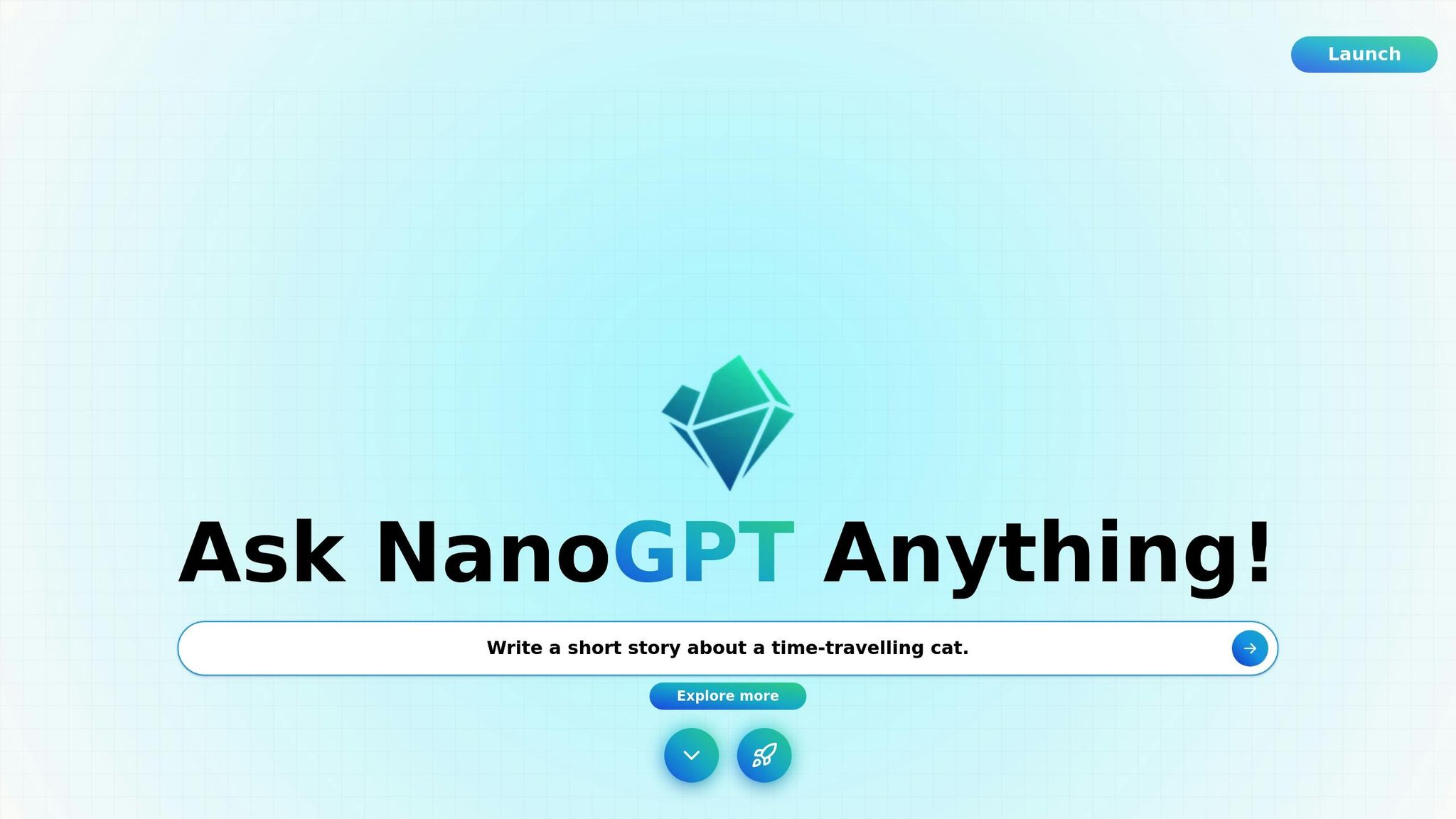
NanoGPT offers a streamlined way to integrate multiple AI models while prioritizing privacy. Unlike cloud-based systems, it stores all data directly on your device, ensuring greater control and security. Through one interface, users can access powerful AI tools like ChatGPT, Deepseek, Gemini, Flux Pro, Dall-E, and Stable Diffusion. This setup forms the backbone of its impressive churn prediction capabilities.
For churn prediction, NanoGPT leverages models such as ChatGPT, Gemini, and Deepseek to analyze service transcripts, social sentiment, and numerical trends in real time. This combination helps organizations detect subtle behavioral shifts that often signal potential customer churn.
The platform’s pay-as-you-go pricing model is particularly appealing for applications with fluctuating data needs, such as streaming services. By adopting this model, users can cut costs by 30-60% compared to traditional subscription plans.
One of NanoGPT’s standout features is its commitment to privacy. By storing all customer data locally, businesses retain full control over sensitive information like transaction records and communication logs. This design ensures compliance with regulations like GDPR, CCPA, and HIPAA, while minimizing the risk of data breaches commonly associated with cloud storage.
NanoGPT requires 50-100 GB of local storage for model caching and integrates seamlessly through standard REST APIs, supporting formats like JSON, CSV, and Parquet.
From a performance standpoint, NanoGPT handles up to 100,000 API calls per minute per node. Enterprise users typically experience sub-second response times for churn risk scoring on individual customer records. For example, in telecommunications, the platform processes call detail records, usage patterns, and customer service data in real time, achieving churn prediction accuracy rates of 85-92% with prediction horizons of 30-60 days.
SaaS companies have reported a 78% improvement in early churn detection when using NanoGPT, compared to traditional batch processing methods. Its ability to process multiple data types simultaneously allows it to identify complex churn indicators that single-model systems often overlook.
Another advantage is its quick deployment. Most teams integrate NanoGPT within 2-3 weeks, compared to the 2-3 months typically needed for traditional solutions. This makes it an efficient option for businesses looking to rapidly implement advanced churn prediction capabilities.
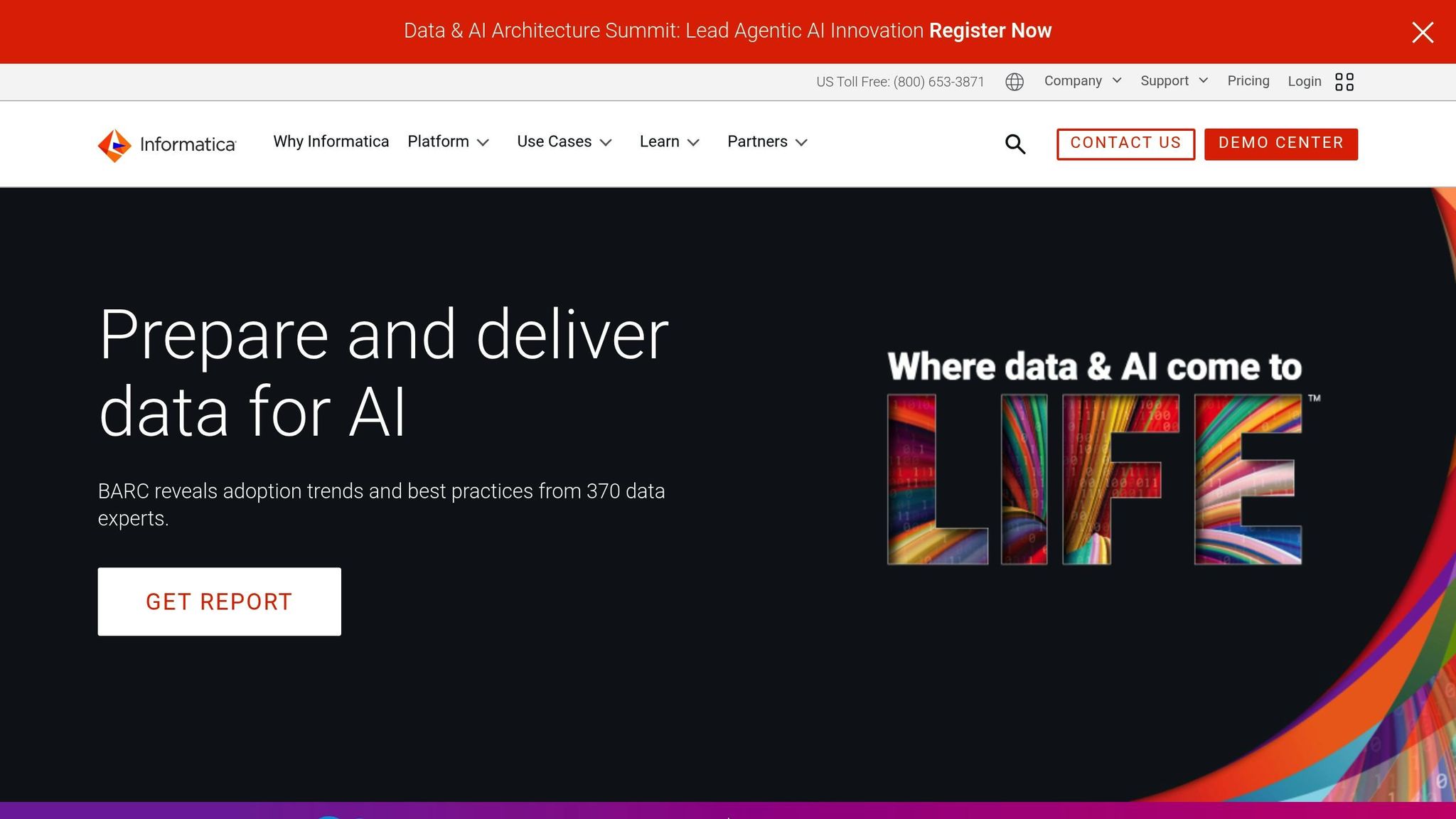
The Informatica Intelligent Data Management Cloud stands out as one of the top tools for real-time churn prediction, offering enterprise-level streaming capabilities tailored for complex AI training tasks. With its proven ability to handle high-volume streaming, it provides a dependable solution for organizations looking to streamline data integration and support advanced AI applications.
Informatica's Cloud Data Integration service utilizes a parallel processing engine to handle streaming data efficiently. It enables the simultaneous ingestion of data from multiple sources and processes this data in real time. Powered by Informatica's CLAIRE AI engine, the platform automatically optimizes data pipelines based on usage trends, simplifying routine streaming operations. It also employs Change Data Capture (CDC) to track updates and includes embedded validation to ensure the data fed into AI models is accurate and clean.
A key strength of Informatica is its extensive library of pre-built connectors that facilitate seamless integration with major databases, cloud services, and SaaS applications. These include connectors for platforms like Salesforce, SAP, Oracle, Microsoft SQL Server, and leading cloud providers such as AWS, Azure, and Google Cloud. The platform's PowerCenter technology further enhances streaming transformations through intuitive visual workflows. For custom AI and machine learning platforms, REST API connectors provide integration options, while universal connectivity with real-time messaging systems like Apache Kafka, Amazon Kinesis, and Azure Event Hubs ensures a smooth streaming architecture.
Informatica offers flexible deployment options, supporting multi-cloud, hybrid, and on-premises setups through its Intelligent Data Management Cloud framework. Its cloud-native deployment runs on major public cloud providers and adjusts resources automatically based on data volume. Hybrid solutions allow organizations to keep sensitive data on-premises while leveraging cloud computing for AI model training. For added security, Secure Agent technology encrypts communications between on-premises systems and the cloud. Organizations with stringent compliance needs can opt for fully on-premises deployments, maintaining complete control over their data.
Informatica uses a consumption-based pricing model measured in Informatica Processing Units (IPUs), meaning you only pay for the resources you use. This flexible approach is especially useful during periods of high data activity, such as when training AI models. The platform's intelligent workload optimization further ensures operational costs remain manageable while delivering the scalability needed for real-time churn prediction tasks.
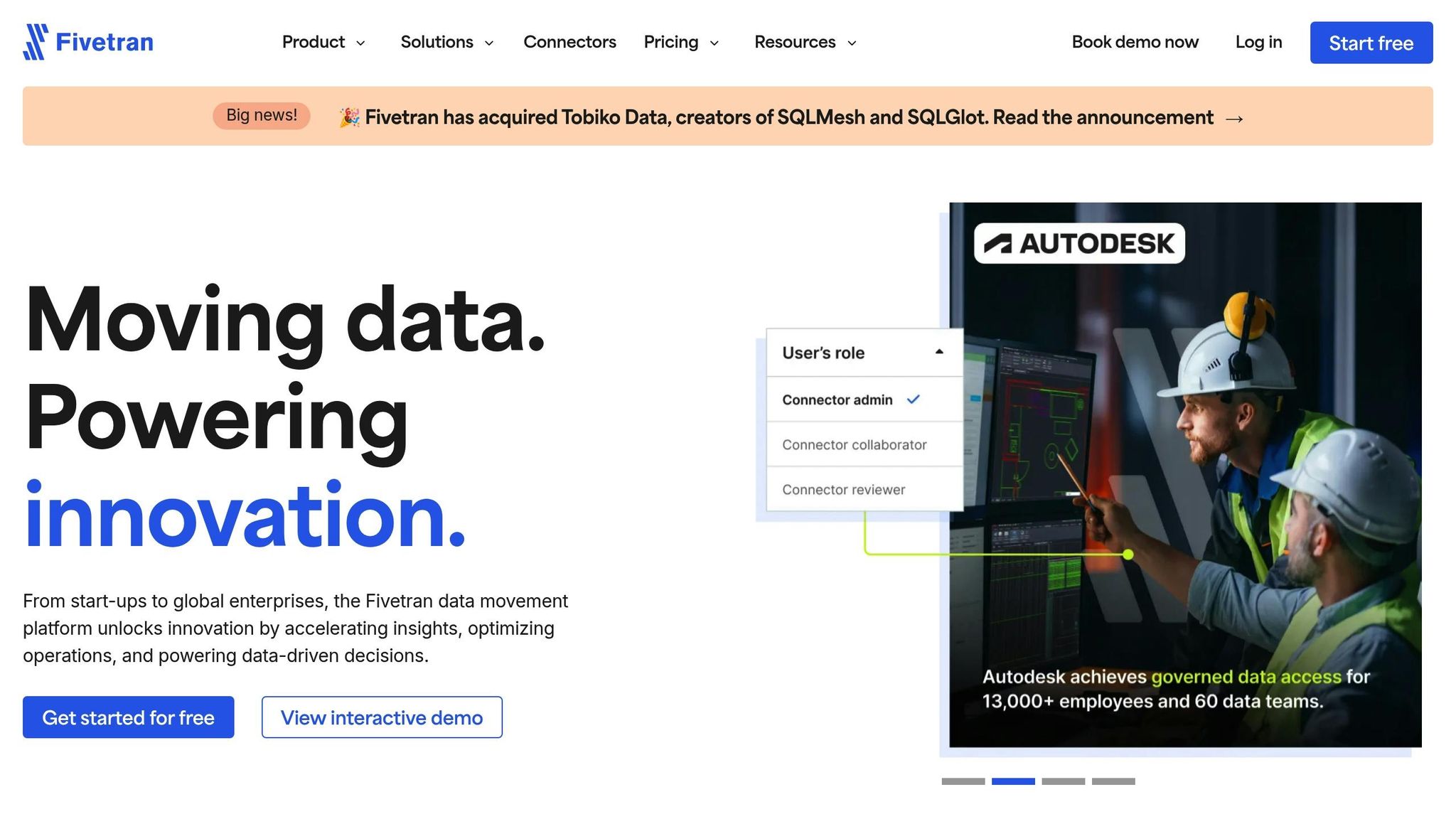
Fivetran is an automated data integration platform designed to simplify and streamline data pipeline management. By offering near real-time data streaming, it ensures a consistent flow of information, making it particularly useful for AI applications like churn prediction. Its automation reduces the need for manual intervention, while its robust data ingestion methods help maintain the accuracy of AI models.
Fivetran employs a log-based replication system and custom connectors to capture changes as they happen, adapting pipelines to evolving source systems. This real-time capability is crucial for tasks like churn prediction, where timely insights are key. It uses incremental sync to transfer only new or updated data, saving both bandwidth and processing time. Additionally, its built-in monitoring system tracks data freshness and pipeline health, sending alerts if synchronization delays occur, ensuring reliability.
The platform provides a wide range of pre-built connectors for databases, SaaS applications, and cloud platforms, including popular tools like Snowflake, BigQuery, and Amazon Redshift. For custom needs, a REST API connector allows integration with proprietary applications. Fivetran also supports real-time data streaming through an event-driven architecture, making it compatible with messaging systems. Features like automatic error handling, retry mechanisms, and column-level lineage tracking add to its reliability and transparency, making data movement smoother and more dependable.
As a fully managed cloud service, Fivetran takes care of infrastructure and scaling automatically. It processes data across multiple regional centers to minimize latency and offers secure private deployment options for environments with stricter requirements.
Fivetran uses a consumption-based pricing model, charging based on monthly data changes. Its auto-scaling capabilities handle sudden traffic spikes with ease, making it a great fit for AI workflows that require periodic high-volume data ingestion.
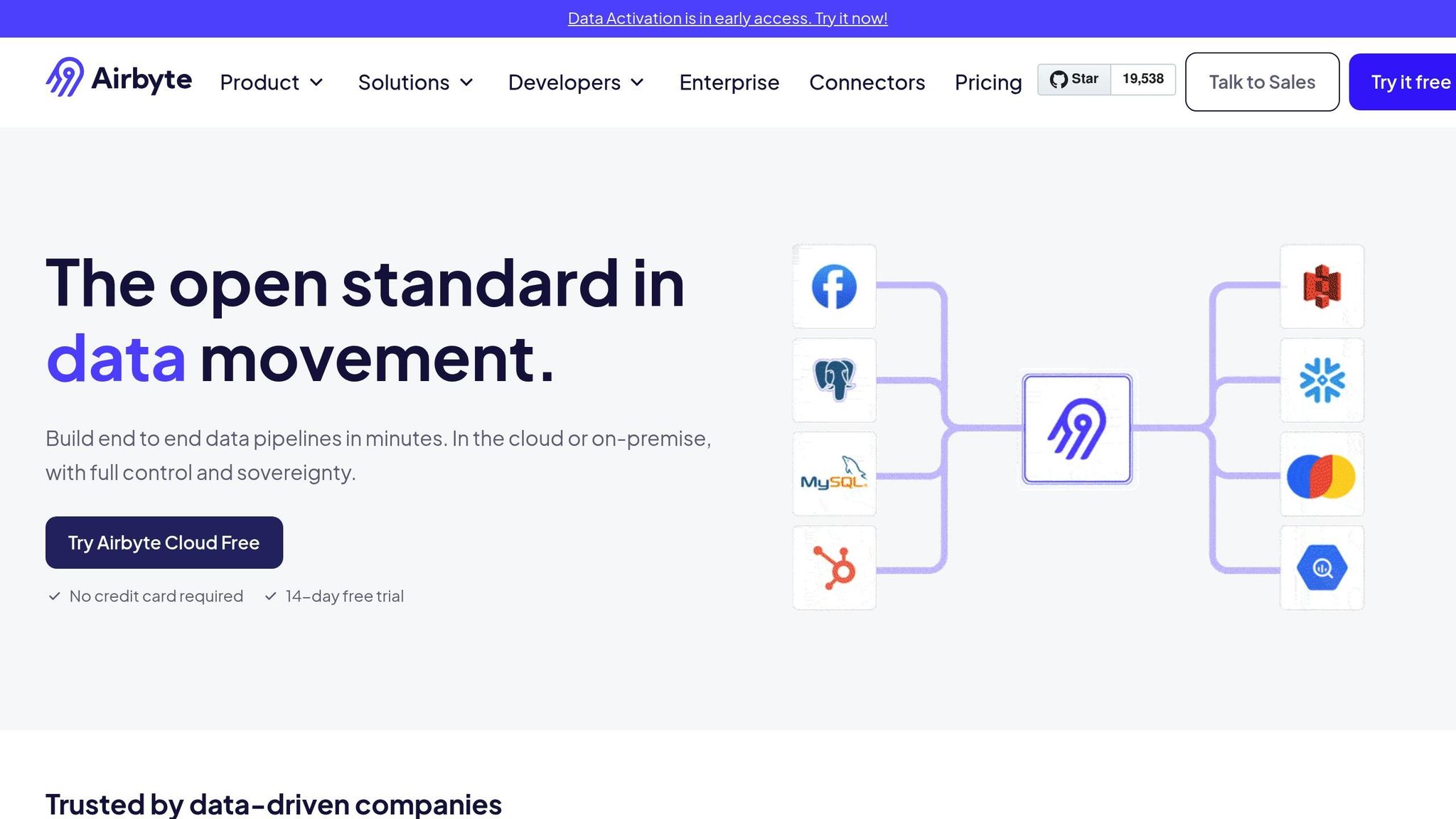
Airbyte is an open-source platform designed to simplify data integration, focusing on connectors that facilitate seamless data movement. Whether you prefer a cloud-hosted or self-hosted setup, Airbyte offers flexibility to manage streaming data pipelines, making it an excellent choice for AI-driven tasks like churn prediction.
Airbyte ensures your AI models stay updated by using incremental sync with Change Data Capture (CDC) for databases such as PostgreSQL, MySQL, and SQL Server. Its scheduling system allows frequent data syncs, keeping machine learning models and analytics tools aligned with the latest customer interactions, transaction trends, and engagement data. This real-time data flow is crucial for maintaining accurate and responsive AI systems.
Airbyte’s connector library is a key strength, enabling smooth data integration across a wide range of platforms. It supports databases, SaaS applications, and cloud data warehouses, including tools like Salesforce, HubSpot, Stripe, PostgreSQL, MongoDB, Snowflake, BigQuery, and Redshift. For custom needs, the Connector Development Kit (CDK) allows you to create tailored connectors using Python or low-code solutions. Additionally, the marketplace offers a growing collection of community-built connectors, all equipped with features like error handling, retry mechanisms, and data validation.
Airbyte provides three deployment models to suit different organizational needs:
Airbyte Open Source is available for free, while Airbyte Cloud operates on a credit-based pricing system tied to data volume. Its architecture supports auto-scaling and parallel processing, ensuring efficient handling of large-scale AI workloads. This combination of cost-effectiveness and scalability makes it a powerful tool for AI applications like churn prediction.
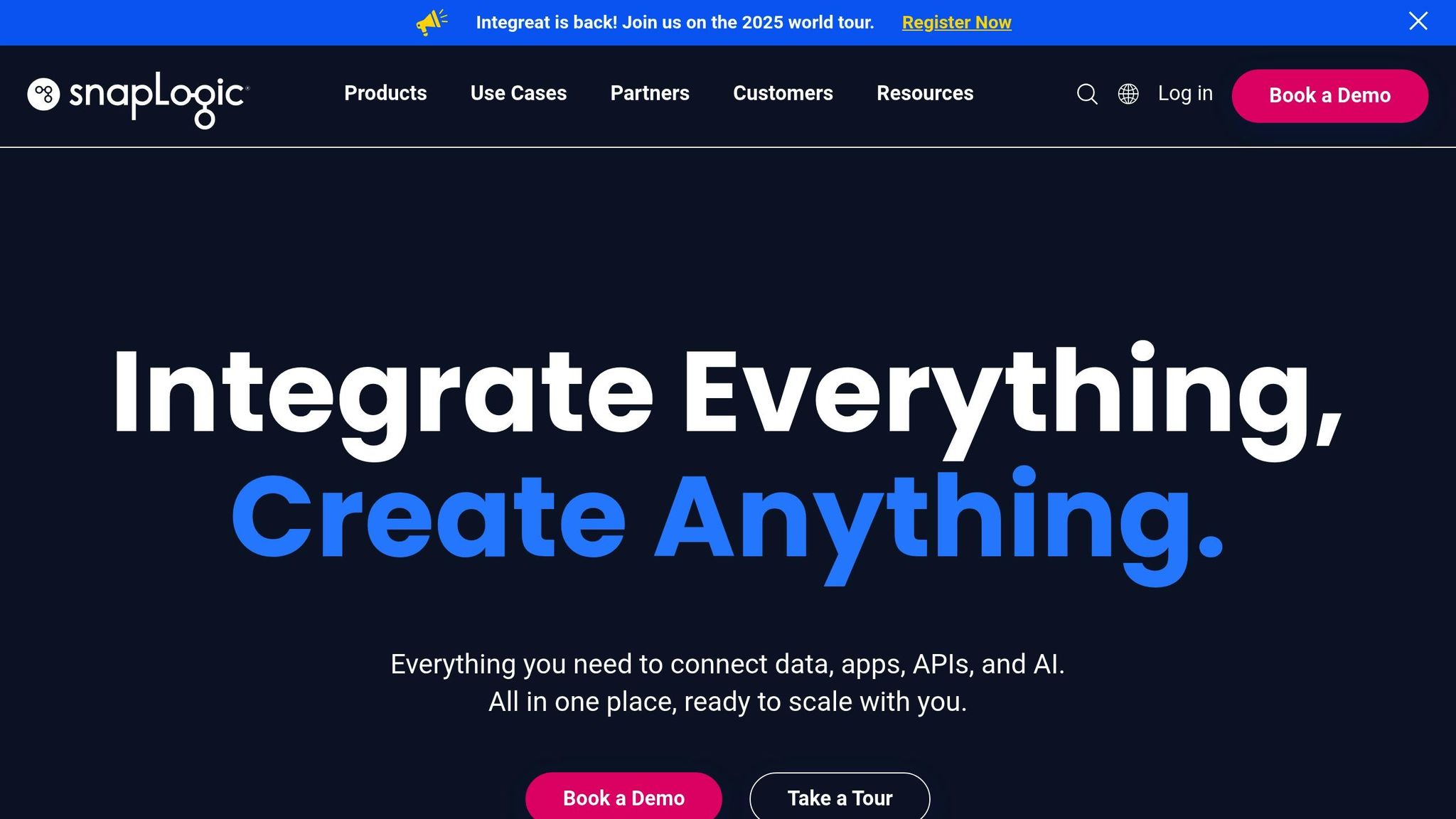
SnapLogic continues to make its mark among top streaming data integration tools by offering low-code solutions tailored for real-time churn prediction. This platform is designed to simplify the machine learning process, empowering organizations to adopt AI-driven churn prediction without needing deep coding expertise. Its standout feature is its ability to seamlessly integrate streaming data into AI models, making it a go-to choice for businesses aiming to predict and reduce customer churn.
SnapLogic leverages its Ultra Tasks feature to deploy machine learning models as low-latency REST APIs or "Always-On" pipelines. With its Model Hosting Pipeline and the Predictor (Classification) Snap, the platform generates real-time predictions. For churn prediction, SnapLogic processes customer data - like transaction records, engagement metrics, and behavioral patterns - in real time. This enables businesses to take proactive retention measures, with the platform achieving an average logistic regression accuracy of 80.58 percent.
SnapLogic supports a wide range of integrations, including files, databases, on-premise and cloud applications, APIs, and IoT devices. Its GenAI App Builder further enhances the platform by enabling applications that analyze subscriber behavior, deliver personalized retention strategies, and automate customer segmentation.
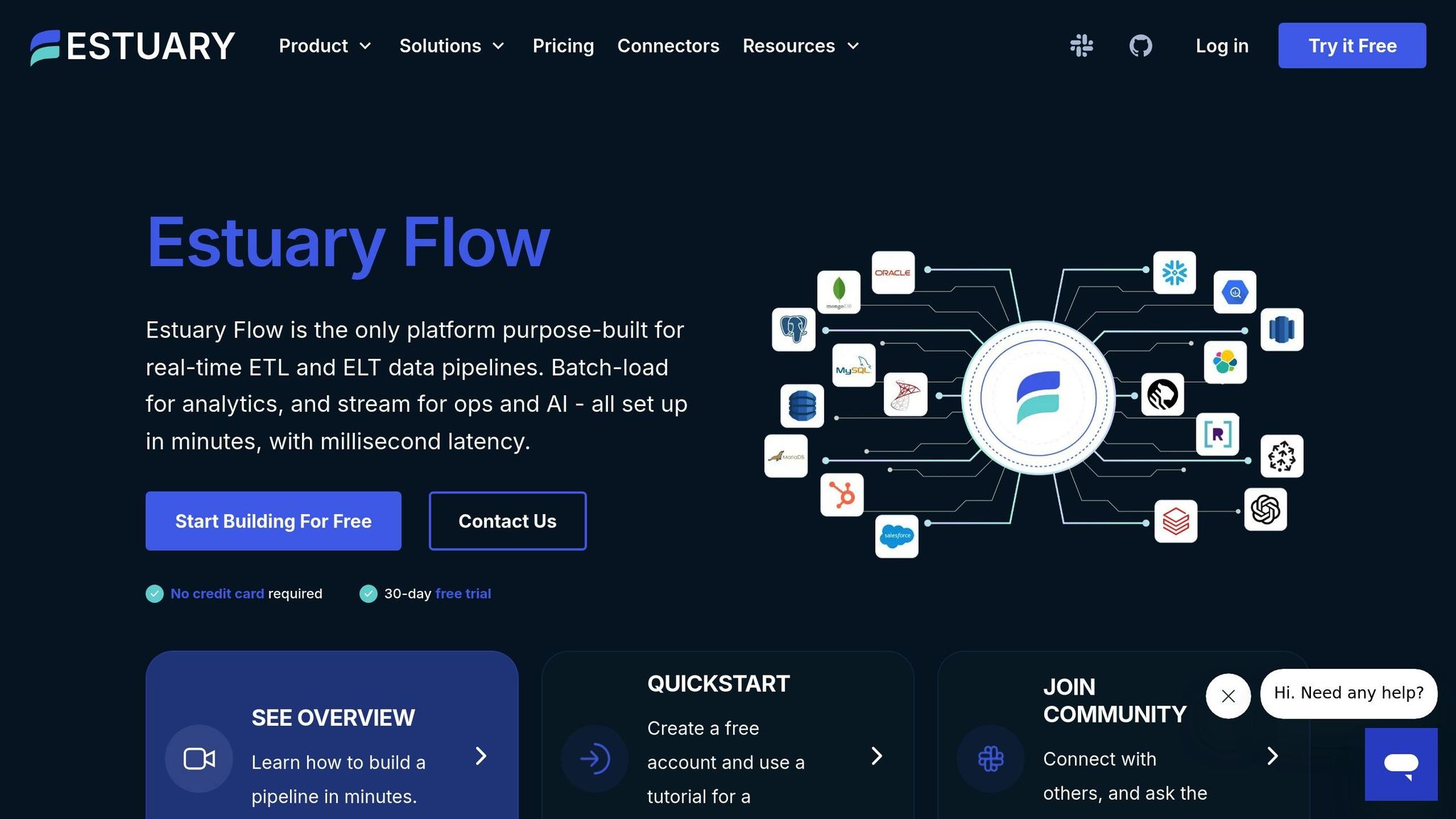
Estuary Flow powers real-time data movement to support AI-driven churn prediction. With access to over 200 pre-built ETL connectors, it equips businesses with the infrastructure necessary to fuel their AI systems. By enabling real-time data delivery, the platform ensures continuous insights for AI applications.
Estuary Flow leverages Change Data Capture (CDC) technology to create low-latency ETL/ELT pipelines that track real-time changes. Its standout "Derivations" feature, which supports both streaming SQL and JavaScript, enables real-time data transformations. This capability allows users to filter, aggregate, and join data, ensuring precise churn predictions.
The platform also includes "Dekaf", a Kafka API compatibility layer, which allows seamless integration with Kafka-native tools.
Estuary Flow’s extensive connector library offers tailored processing modes to meet various data integration needs. For streaming data, it supports Apache Kafka and Google Pub/Sub as both sources and destinations. For batch data, it uses the Airbyte protocol while also providing native real-time SaaS integrations.
These versatile integrations ensure that AI models have access to accurate, up-to-date data, which is crucial for effective churn prediction.
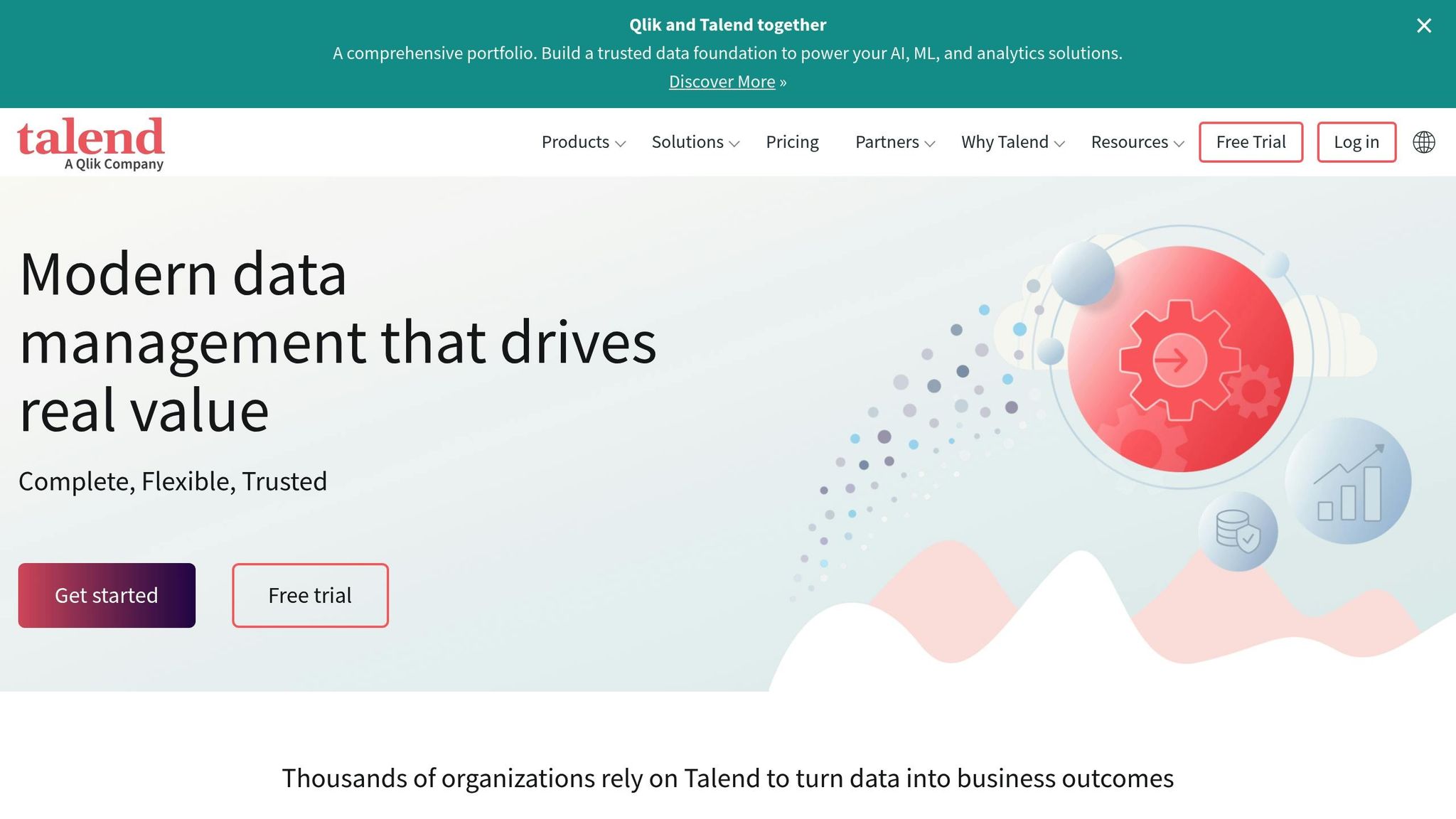
Talend Data Fabric takes integration and deployment to the next level, making it a standout tool for churn prediction models. By incorporating real-time data streams, it ensures AI models stay up-to-date with the latest customer behaviors, which is key for detecting churn as it happens.
This tool excels at capturing data as it's generated, continuously tracking changes. This means businesses get timely and accurate insights that are crucial for understanding and predicting churn.
With a robust library of connectors, Talend Data Fabric pulls data from a wide range of sources, including cloud applications, databases, and file systems. This consolidated approach simplifies feeding data into AI pipelines.
Whether you need cloud-based, on-premises, or hybrid deployment, Talend Data Fabric offers the flexibility to match your data governance and security needs.
The subscription-based pricing adapts to your data growth, ensuring the platform maintains high performance as processing demands increase. This scalability makes it a reliable choice for businesses of all sizes.
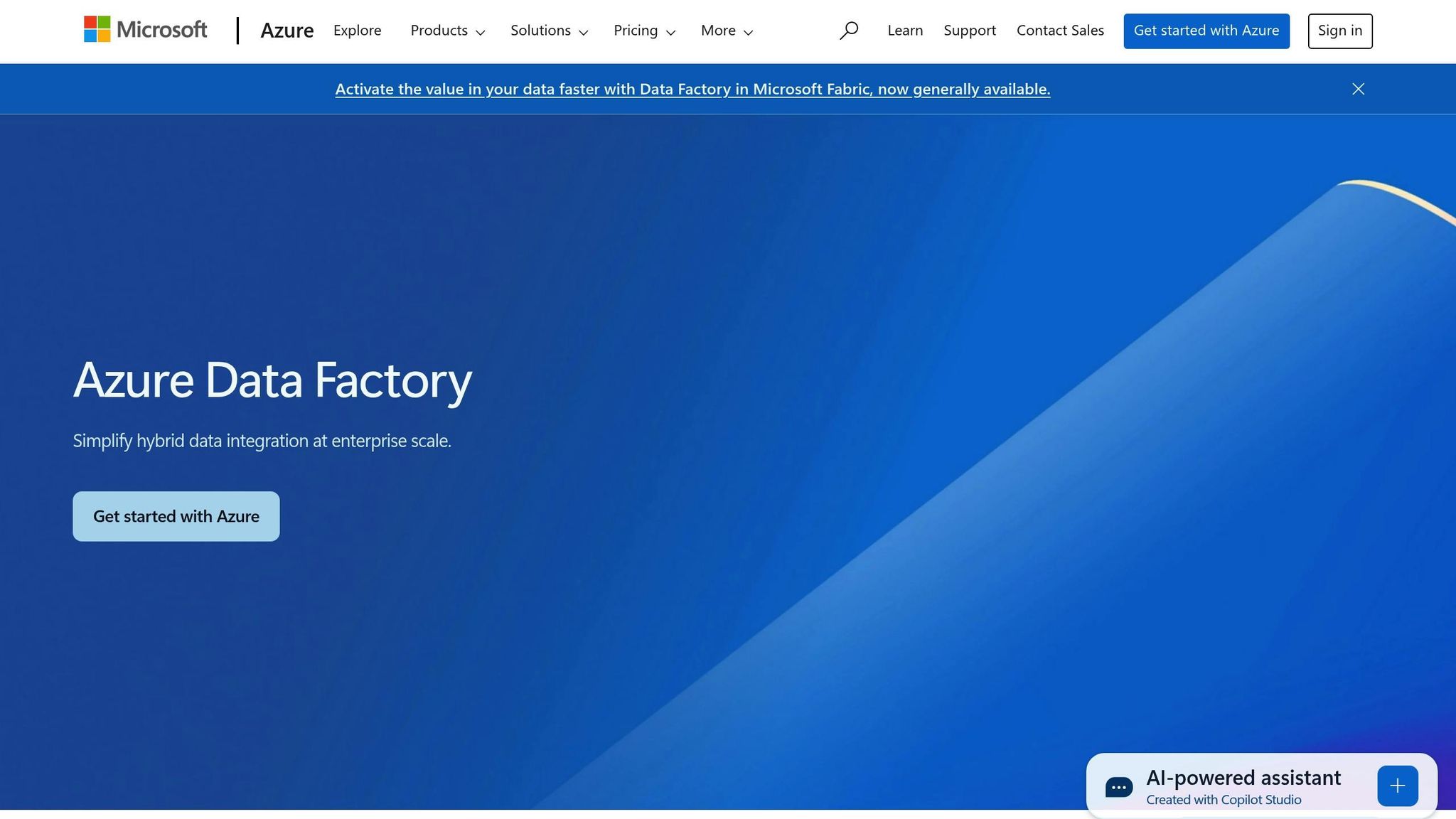
Microsoft Azure Data Factory (ADF) stands out by offering a near real-time solution rather than true streaming. ADF is a batch processing service designed to handle data ingestion for tasks like churn prediction models. What makes it appealing is its ability to initiate activities within four minutes of a scheduled time. While it doesn't provide millisecond-level streaming, this short delay is still practical for scenarios where a four-minute window is acceptable for updates in churn prediction workflows.
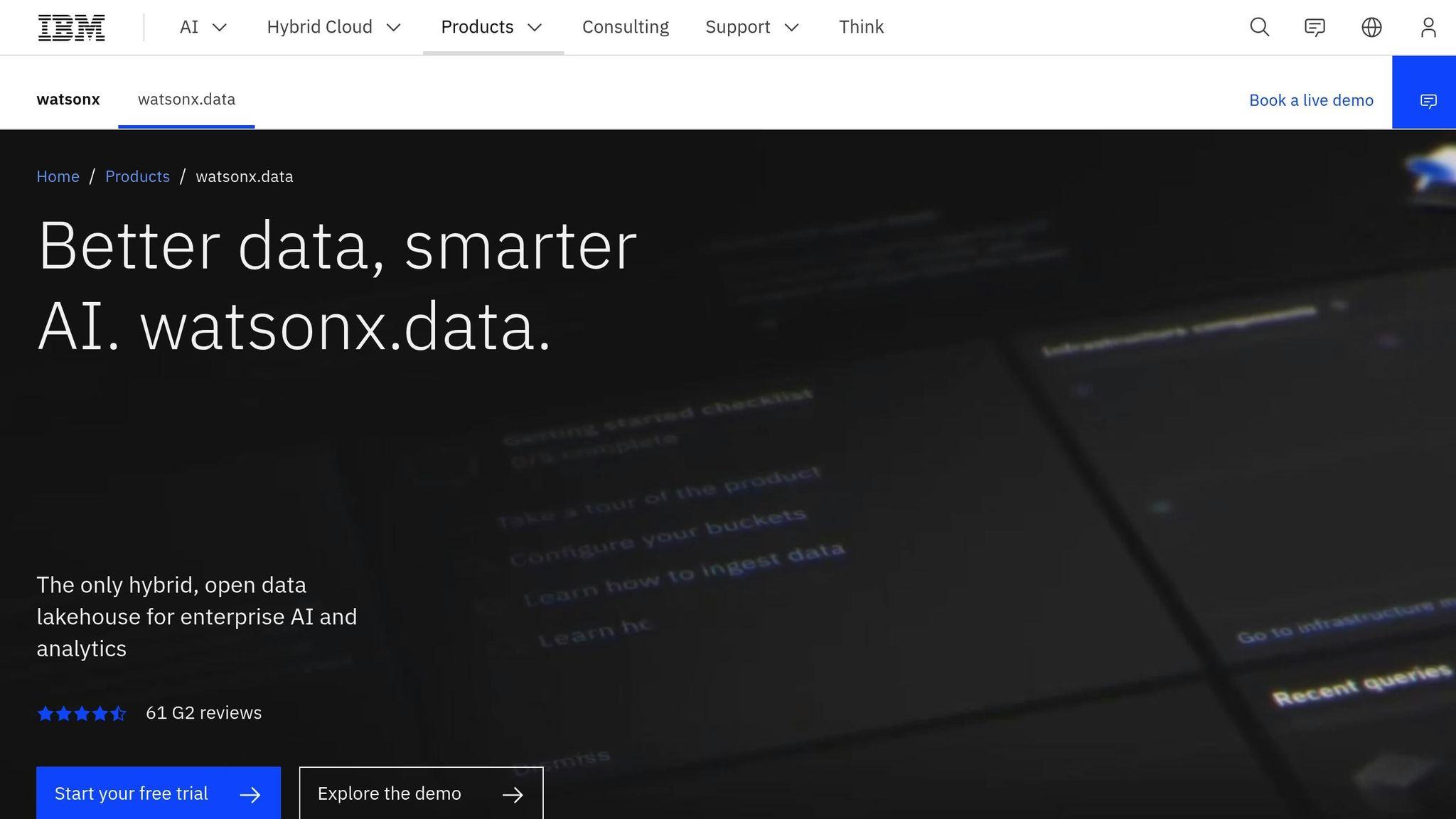
IBM's combined solution of watsonx.data and DataStage presents a solid option for managing streaming data in churn prediction scenarios. Designed for enterprise needs, this platform handles large-scale data processing in near real-time with efficiency and precision.
The platform is equipped to continuously process millions of records using prebuilt connectors, performing instant transformations to deliver clean, ready-to-use data for AI applications.
With features like automatic data drift detection and Change Data Capture (CDC), it adjusts to schema changes seamlessly, ensuring uninterrupted data flow for churn prediction models. CDC minimizes disruptions to production systems while keeping source data synchronized and up-to-date, which is critical for accurate predictions.
This ingestion capability is further enhanced by IBM's extensive library of connectors, enabling smooth integration with a variety of data sources.
The platform's flexible connectivity ensures a steady flow of timely data for churn prediction models. DataStage connectors simplify the ETL process, pulling data from numerous sources without a hitch. Additionally, the watsonx.data Presto connector enables smooth data operations between DataStage and the watsonx.data platform.
IBM watsonx.data supports open data formats like Avro, Parquet, Iceberg, and ORC, allowing data to be accessed and shared across multiple engines. This eliminates data silos, which are often a bottleneck in churn prediction workflows. Iceberg, an open data format, is used for storage in object store buckets, making cross-application data sharing seamless.
The solution also integrates with other IBM tools, such as Db2, Netezza Performance Server, IBM Knowledge Catalog, and Data Virtualization, as well as various BI tools. For AI-driven applications, the inclusion of Milvus vector database integration allows large-scale storage, indexing, and searching of vector embeddings, which is essential for advanced machine learning models and retrieval-augmented generation tasks.
IBM's solution offers deployment flexibility to suit a range of operational needs, whether in the cloud, on-premises, or hybrid environments.
| Deployment Type | Key Features | Management | Pricing Model |
|---|---|---|---|
| Cloud (as a Service) | Fully managed on IBM Cloud or AWS | Automatic updates and scaling by IBM | Usage-based billing for compute runtime |
| On-premises | Self-managed on Red Hat OpenShift | Customer maintains hardware and software | Software license-based pricing |
| Hybrid Cloud | Distributed across cloud and on-premises | Mixed management model | Combined pricing approach |
The hybrid deployment option is particularly useful for organizations with strict data residency requirements. DataStage pipelines can be configured to operate wherever the data resides - whether in specific regions, on-premises, in the cloud, or across hybrid setups. This is made possible by a remote execution engine that separates the cloud-based control panel from the secure execution environment.
Pricing depends on the deployment type. Cloud deployments follow a pay-as-you-use model, with billing based on compute runtime and duration. Storage is handled through IBM Cloud Object Storage, offering flexibility for scaling operations.
For on-premises installations, traditional software licensing applies. This option gives organizations full control over their infrastructure, including data encryption, firewall configurations, and network security - key considerations for industries with stringent regulations.
The platform's scalability is designed to meet enterprise-level demands. A unified control plane minimizes the need for multiple tools while maintaining robust data integration capabilities across deployment environments. This means organizations can start with smaller churn prediction projects and expand to larger scales without overhauling their architecture.
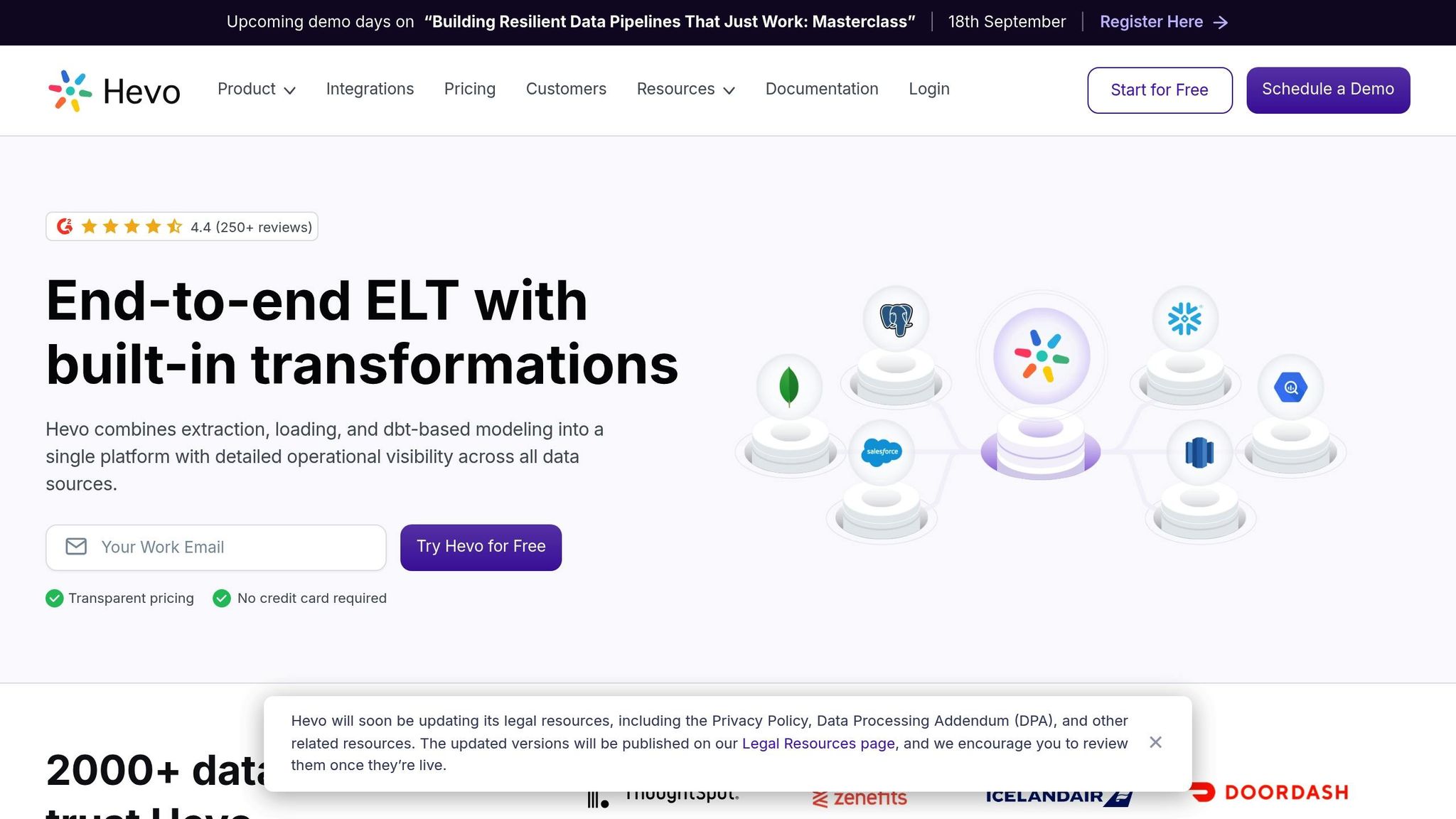
Hevo Data is a cloud-based platform designed to simplify data integration, especially for teams working on churn prediction models. It automates data workflows, making it easier for organizations without a large data engineering team to manage and analyze streaming data.
Hevo Data handles real-time data processing by automating schema detection, transforming data, and monitoring data quality. It flags anomalies that could disrupt churn prediction models. Using features like incremental data loading and Change Data Capture (CDC), the platform only processes updated records, ensuring immediate updates and eliminating the need for batch processing.
This approach ensures continuous synchronization of data across multiple sources, keeping downstream AI models up to date.
With over 150 pre-built connectors, Hevo Data simplifies integration across databases, SaaS platforms, cloud storage, and marketing tools commonly used in churn analysis. These connectors automatically adjust to API changes, reducing the need for manual maintenance. Additionally, custom transformations using Python and SQL allow teams to tailor data preparation within the pipeline.
The platform also supports reverse ETL, enabling churn predictions to be sent back to operational systems. For instance, churn scores can update customer records in CRM tools or trigger marketing workflows based on predefined thresholds. These features integrate seamlessly with Hevo Data’s deployment options.
Hevo Data operates as a fully managed cloud service, taking care of provisioning, scaling, and maintenance automatically. It runs on Amazon Web Services and Google Cloud Platform, ensuring secure and isolated data processing environments.
For global organizations, multi-region deployment allows data to be processed within specific geographic regions, addressing compliance and data residency requirements. The platform also supports VPC connectivity and IP whitelisting, enabling secure connections to on-premises databases and private cloud resources. This flexibility makes it suitable for hybrid architectures, where sensitive data can remain in controlled environments while still being used in churn prediction workflows.
Hevo Data uses a tiered subscription model, starting at $239 per month for up to 1 million records. This makes it easier for organizations to plan their budgets as their data needs grow.
The platform’s auto-scaling infrastructure dynamically adjusts compute resources based on data volume. During high-traffic periods, it scales up to meet demand and scales down during quieter times, optimizing costs. All pricing tiers include unlimited data sources and destinations, and a 14-day free trial lets teams test their workflows and churn prediction scenarios before committing to a subscription.
Selecting the right streaming data integration tool for AI churn prediction models requires a clear understanding of each option's features, deployment methods, and pricing. The table below outlines key details to help you make an informed choice.
| Tool | Real-Time Processing | Connector Count | Deployment Options | Starting Price (USD) | Key Strength |
|---|---|---|---|---|---|
| NanoGPT | Pay-as-you-go access | AI model integrations | Cloud-based | Starts at $0.10 per use | Privacy-focused AI access |
| Informatica Intelligent Data Management Cloud | Stream processing engine | 200+ pre-built | Cloud, hybrid, on-premises | $2,000/month | Enterprise-grade governance |
| Fivetran | Change Data Capture | 300+ connectors | Fully managed cloud | $120/month | Automated maintenance |
| Airbyte | Real-time sync | 350+ connectors | Cloud, self-hosted | Free (open source) | Open-source flexibility |
| SnapLogic | Streaming pipelines | 700+ snaps | Cloud, hybrid | $2,500/month | Visual pipeline design |
| Estuary Flow | Sub-100ms latency | 200+ connectors | Managed cloud service | $0.50/GB processed | Ultra-low latency |
| Talend Data Fabric | Real-time integration | 900+ connectors | Cloud, on-premises, hybrid | $1,170/month | Comprehensive data quality |
| Microsoft Azure Data Factory | Stream Analytics integration | 90+ connectors | Azure cloud | $0.50/pipeline run | Microsoft ecosystem |
| IBM Watsonx.data + DataStage | Real-time data movement | 80+ connectors | Cloud, on-premises | Custom pricing | AI-optimized architecture |
| Hevo Data | CDC and incremental loading | 150+ connectors | Fully managed cloud | $239/month | No-code transformations |
The tools in the table vary significantly in pricing, deployment options, and features, making it easier to match them to specific business needs.
For businesses on a budget, Airbyte offers an open-source solution, but keep in mind that it may require technical expertise for setup and ongoing maintenance. On the other hand, premium enterprise platforms like Informatica Intelligent Data Management Cloud and SnapLogic justify their higher costs with advanced governance features and robust support.
Connector availability is another critical factor. Tools like Talend Data Fabric and IBM Watsonx.data stand out for their extensive connector libraries, making them ideal for handling diverse data environments. Meanwhile, cloud-native solutions such as Fivetran and Hevo Data simplify operations by reducing the need for manual oversight.
For teams with fluctuating workloads, NanoGPT's pay-as-you-go model offers flexibility, allowing experimentation with AI models without committing to a subscription. This can be particularly helpful for teams testing different capabilities or managing inconsistent usage patterns.
Finally, consider the latency requirements of your churn prediction models. For real-time decision-making, Estuary Flow is a strong choice with its sub-100ms processing speed. However, if your needs are less time-sensitive, batch-oriented tools may suffice.
Choosing the right streaming data integration tool plays a key role in enabling effective real-time churn prediction. Each platform discussed here offers unique strengths tailored to different operational needs and compliance demands.
For industries dealing with sensitive customer information, enterprise-grade options like Informatica Intelligent Data Management Cloud and IBM Watsonx.data deliver essential features such as audit trails and robust security controls, ensuring compliance with stringent regulations.
Mid-market companies looking for simplicity and ease of use might find Fivetran and Hevo Data to be excellent choices. These cloud-native platforms handle infrastructure management for you, freeing up resources to focus on building and refining predictive models. On the other hand, Airbyte provides an open-source alternative that suits tech-savvy organizations with strong engineering capabilities, though it does require a greater technical commitment to maintain.
For teams experimenting with AI-driven solutions, NanoGPT offers a budget-friendly option. Priced at just $0.10 per use with local data storage, it lets organizations explore AI integrations without incurring hefty subscription costs or sacrificing data privacy.
When it comes to real-time processing, tools like Estuary Flow shine with their low-latency performance, ideal for businesses that need to act quickly on churn indicators. However, for companies with longer customer lifecycles, batch-oriented solutions may prove sufficient. Across all platforms, scalability and smooth integration with existing systems remain critical factors to consider.
NanoGPT puts user privacy front and center by ensuring all data stays on your device. Nothing is sent to external servers, which means the risk of data breaches, leaks, or unauthorized access - common concerns with cloud-based tools - is greatly minimized.
By keeping everything within your browser, NanoGPT creates a secure space where your sensitive information stays entirely under your control. This local-first approach offers a safer way to handle critical or private data, giving you confidence and peace of mind.
When choosing a tool to integrate streaming data into AI models for churn prediction, it's important to look for a few key features. First, make sure the tool works well with a variety of data sources, supports real-time processing, and includes automation options to streamline your workflows. Strong data security is essential to protect sensitive customer information, and having clear, reliable documentation can make implementation much smoother.
You'll also want a tool that ensures low latency and high reliability to keep your predictions accurate and timely. Effective data handling and flexible replication options are equally important for boosting performance and turning data into actionable insights.
NanoGPT's pay-as-you-go pricing model offers businesses a flexible way to manage costs by paying only for the resources they actually use. This setup is particularly helpful for companies with varying data demands, as it removes the burden of expensive subscriptions or binding long-term contracts.
Since costs scale with usage, businesses can better manage their budgets while still having access to advanced AI tools whenever required. Plus, data privacy gets a boost - everything stays securely stored on the user's device, adding an extra layer of reassurance.